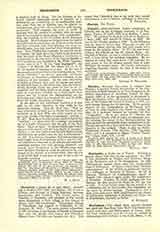

Chardon, MATHIAS (his name in religion was Charles), a learned French Benedictine of the Congregation of Saint-Vannes, b. at Yvoi-Varignan in the present department of Ardennes, France, September 22, 1695; d. at the monastery of St-Arnold in Metz, October 21, 1771. He took vows in the monastery of St-Vannes (St-Viton) in Verdun in 1712, and soon became famous for his learning. At the general chapter of the Congregation of St-Vannes, held at Toul, in 1730, Chardon was forced to resign his office as a professor because he opposed the Bull “Unigenitus“. He is the author of “Histoire des Sacrements” (Paris, 1745, 6 vols.), an historical treatise refuting the errors of the Sacramentarians by showing how the sacraments were administered in the Church, and how they were used from the time of the Apostles to the present. There is also an Italian translation (Verona, 1754; Brescia, 1758; Capolago, 1835), and it is reprinted in Migne, “Cursus Theologiae” (Paris, 1840), XX, 1-1152.
MICHAEL OTT

